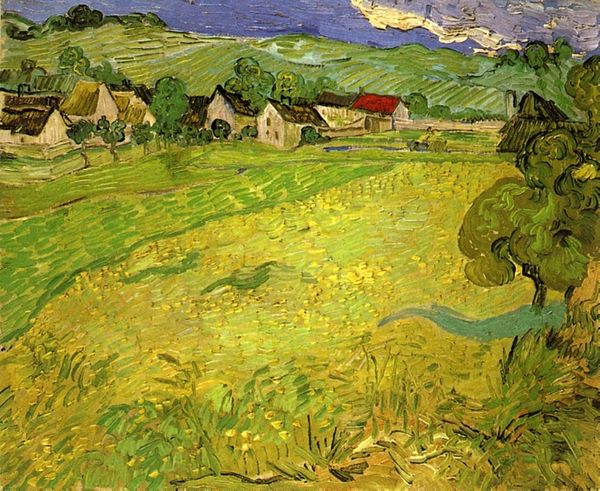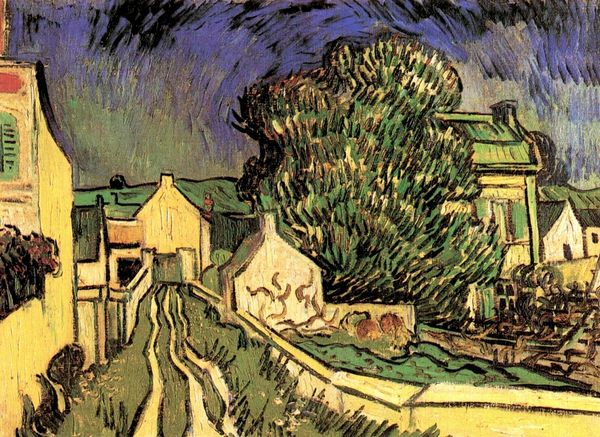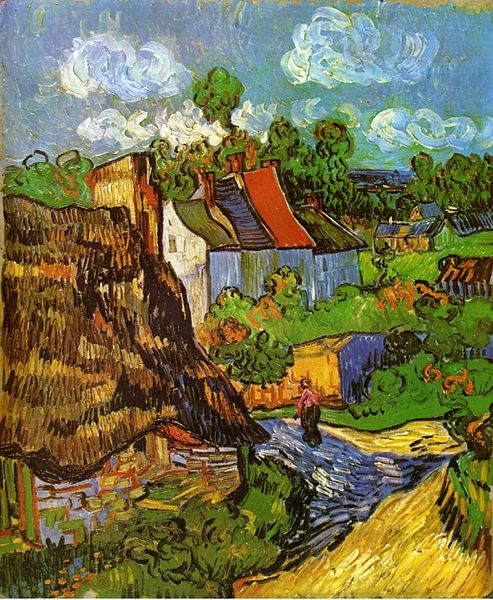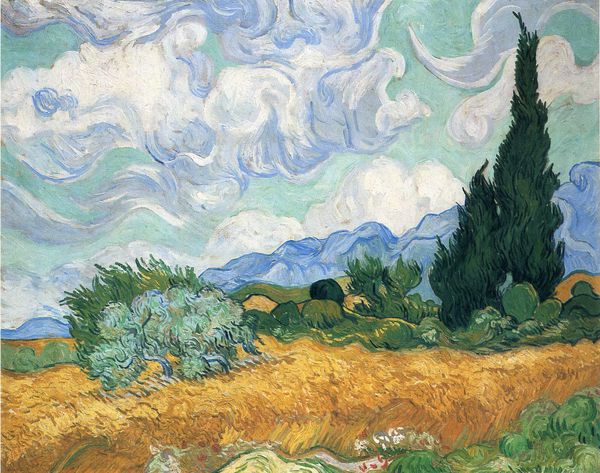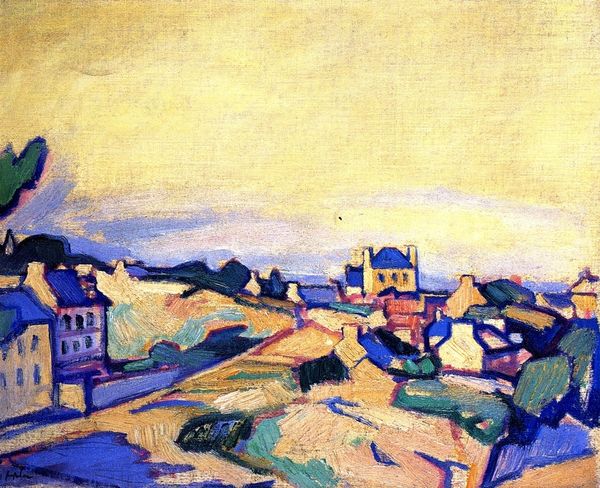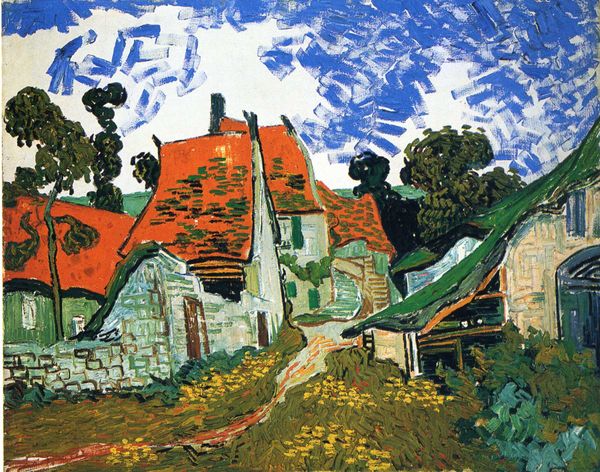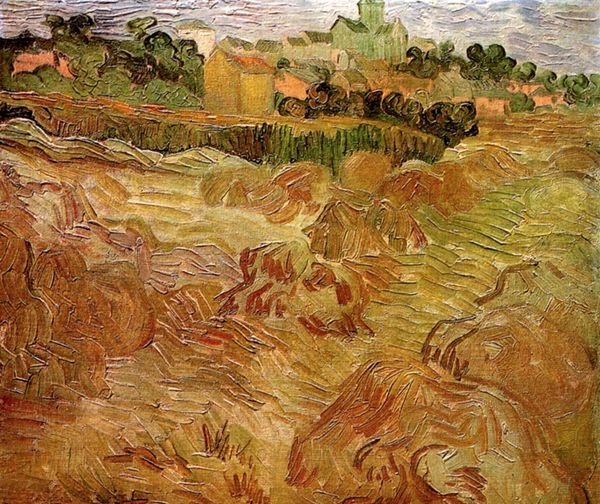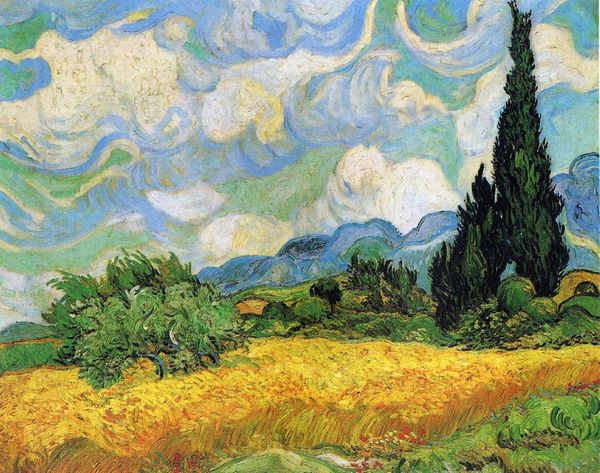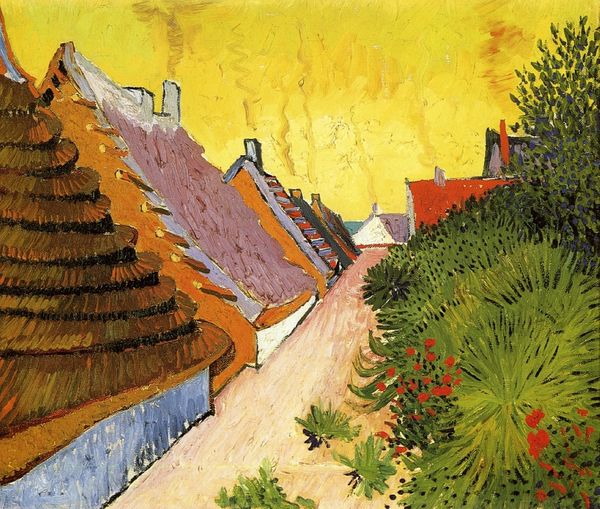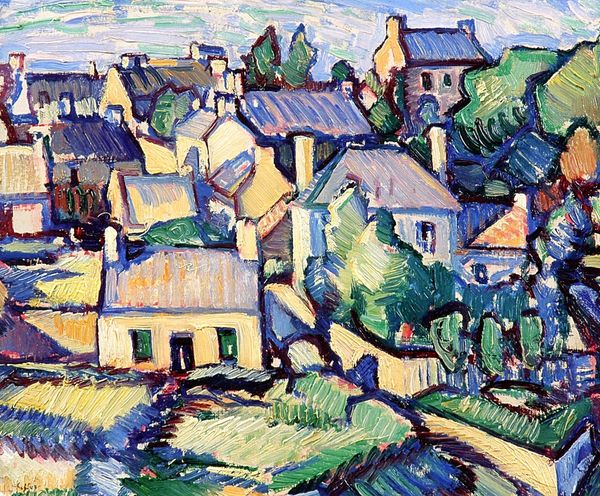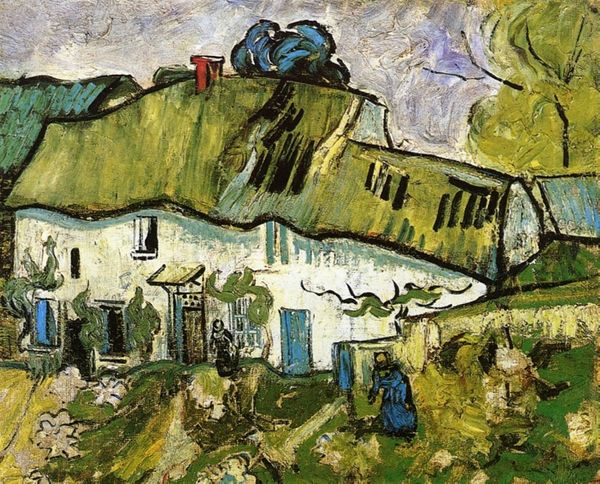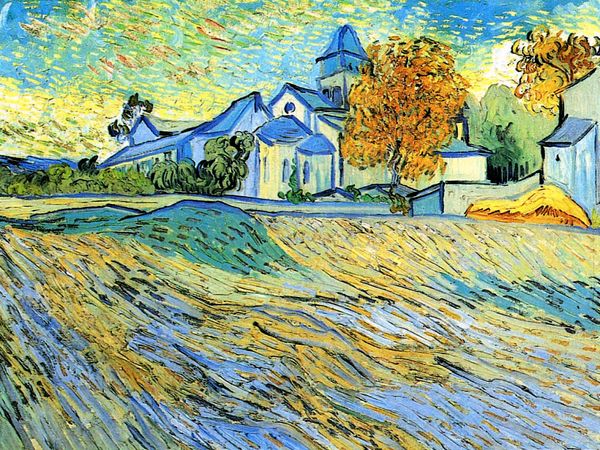
View of Auvers with Church 1890
0:00
0:00
vincentvangogh
Rhode Island School of Design Museum (RISD Museum), Providence, RI, US
painting, oil-paint, impasto
#
painting
#
oil-paint
#
landscape
#
impasto
#
cityscape
#
post-impressionism
Dimensions: 34 x 42 cm
Copyright: Public domain
Curator: Standing before us is Van Gogh’s "View of Auvers with Church," painted in 1890. It is currently housed at the Rhode Island School of Design Museum. Editor: Whoa, there’s an intensity! I’m immediately pulled in by the golden field; it shimmers like something alive. Almost too alive...gives me the heebie-jeebies! Curator: It's important to recognize the context. Van Gogh created this shortly before his death. Auvers-sur-Oise was where he sought treatment under Dr. Gachet, and this work represents a significant part of his exploration of identity through place and environment. We need to consider the socio-political elements influencing the Post-Impressionist era, like increasing industrialization and the retreat to the pastoral. Editor: True, and it's impossible to look at this and not think about everything he was dealing with. But honestly, the first thing that grabs you is how he attacked that canvas with the paint, so thick you can feel it, those little brushstrokes making a chaotic sort of harmony. And look how the village sort of presses down on the field—there’s tension between the calm pastoral scene and the weight of the village itself. Curator: Precisely. The high vantage point contributes to that tension, reducing the figures and making their homes seem burdened, or burdened by, the environment. There is a distinct socio-economic element here. His technique, his expressive brushwork, conveys the angst of a changing world. How identity and the structures that surround us, particularly architectural structures and hierarchies, inform psychological narratives in rural communities, speaks to Van Gogh’s keen social insight. Editor: He felt so much! The town looms, like a judgment, maybe. But it’s also…grounding. Like a fortress. Maybe this wheatfield represents that turmoil he went through while the village represents something that's permanent. Curator: "Grounding" and "permanent" are key insights. This vista reminds us to reflect on the interplay between identity and one's social milieu. Editor: It’s interesting how one single artwork, done with some blobs of paint, can have so much bottled inside! I walk away from this one with more questions than I came with.
Comments
No comments
Be the first to comment and join the conversation on the ultimate creative platform.
